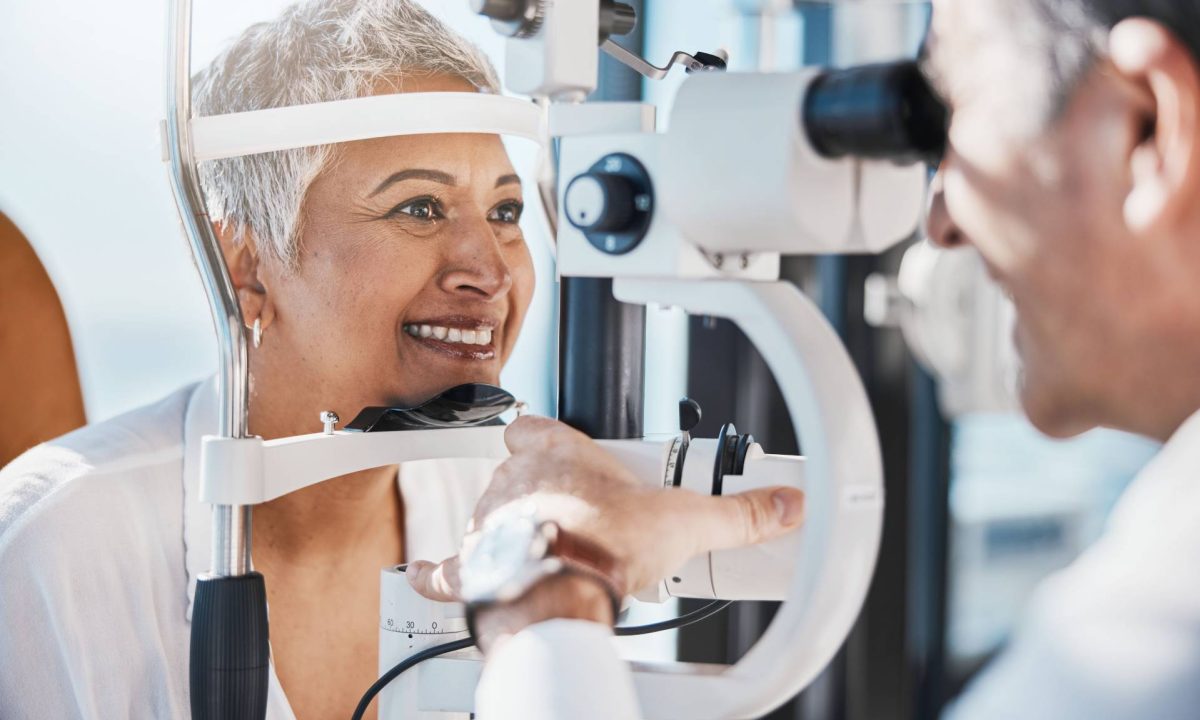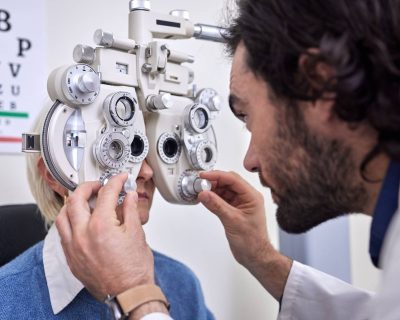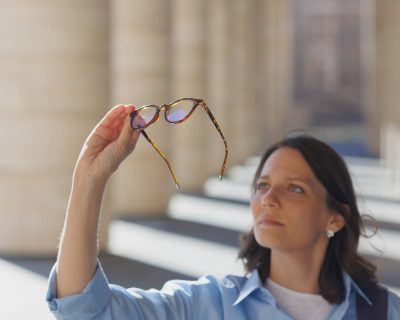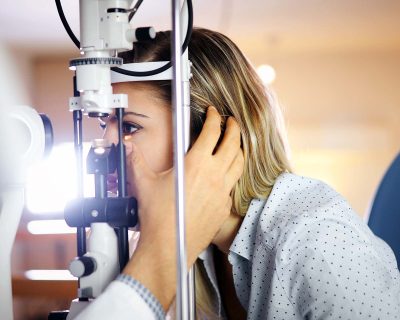
Understanding Presbyopia: An Age-Related Vision Change
As we age, certain changes occur in the eyes that affect our vision. Over time, we may have trouble focusing our vision on close objects. This condition is called presbyopia. It is a common and gradual age-related condition that affects nearly everyone to some degree as they get older. Presbyopia typically becomes noticeable around the age of 40, and it continues to progress with time.
Causes
Presbyopia is primarily caused by age-related changes in the eye’s anatomy, specifically the crystalline lens and the ciliary muscle responsible for lens accommodation. Here are the major factors that contribute to the development of presbyopia:
Changes in the Crystalline Lens
The crystalline lens, located behind the iris, is responsible for changing its shape to focus on objects at different distances. In a younger, more flexible eye, the ciliary muscles moving the muscles surrounding the lens contract and relax, changing the shape of the lens.
However, as people age, the crystalline lens gradually loses its flexibility and becomes more rigid. The crystalline lens becomes less elastic due to changes in its composition, including an increase in the density of the lens nucleus. This loss of flexibility means that the lens is less able to change its shape easily in response to the ciliary muscle contractions, making it difficult for the eye to focus on close objects.
Weakening of Ciliary Muscles
The ciliary muscle, which surrounds the lens, plays a crucial role in altering the lens shape for near vision. As people age, the ciliary muscles gradually lose their strength and flexibility. The weakening of these muscles make it more difficult for them to contract and relax efficiently in response to changes in the viewing distance. As a result, the eye becomes less effective at bringing close objects into clear focus, leading to blurred vision for near tasks.
While the loss of lens flexibility is a primary cause of presbyopia, the weakening of ciliary muscles exacerbates the condition. Together, these age-related changes in the eye’s anatomy contribute to the difficulty in maintaining clear vision at close distances.
Symptoms and Treatment
Presbyopia is characterized by the gradual decline in the ability to focus on close-up objects. The symptoms of presbyopia often become noticeable around the age of 40. Here are some common signs and symptoms of presbyopia:
- Difficulty Reading Small Print: Individuals with presbyopia may find it difficult to read books, newspapers, or other materials with small print, especially in low light conditions. People with presbyopia often instinctively hold reading material at a greater distance to bring text into focus.
- Eyestrain: Straining the eyes or experiencing discomfort, headaches, or fatigue while doing close-up work, such as reading or using a computer, can be a symptom of presbyopia.
- Blurred Vision at Close Distances: Individuals with presbyopia may find that close-up objects appear blurry or out of focus, particularly when trying to shift focus from a distant object to something nearby.
- Difficulty Seeing in Dim Lighting: Presbyopia can be more pronounced in low-light conditions, making it harder to read or perform close-up tasks in dimly lit environments. Individuals with presbyopia may find that they require brighter lighting to see up-close objects clearly.
Presbyopia can be effectively treated to improve near vision. Common methods for addressing presbyopia include reading glasses and prescription glasses or contact lenses. Depending on the individual’s eligibility, an eye doctor may also recommend some surgical options that may reduce or eliminate the need for reading glasses. It is important to consult with an eye care professional to determine the most suitable treatment for presbyopia.
If you or your loved one is experiencing these symptoms, it is important to have a comprehensive eye examination by an optometrist. Optometrists are trained to perform comprehensive eye examinations, including assessments of near vision and the ability to focus on close objects. They can accurately diagnose presbyopia and determine the extent of vision changes. Optometrists can recommend personalized treatment options based on your specific needs and preferences. The choice of treatment may depend on factors such as the degree of presbyopia, overall eye health, lifestyle, and any other vision-related issues.
Optometrists play a crucial role in monitoring overall eye health. It is generally recommended that adults have comprehensive eye examinations every 1 to 2 years, or more frequently if advised by your optometrist. If presbyopia is already present, more frequent check-ups may be necessary. Presbyopia is a progressive condition, and your vision needs may change over time. Through regular eye examinations, optometrists can monitor these changes and make the necessary adjustments to your prescription or treatment plan to ensure continued visual comfort and clarity. In addition, they can detect and address other potential eye conditions that may be present alongside presbyopia. Optometrists can provide guidance on proper eye care practices and help manage any concerns or questions related to vision changes.





1 comment on “Understanding Presbyopia: An Age-Related Vision Change”